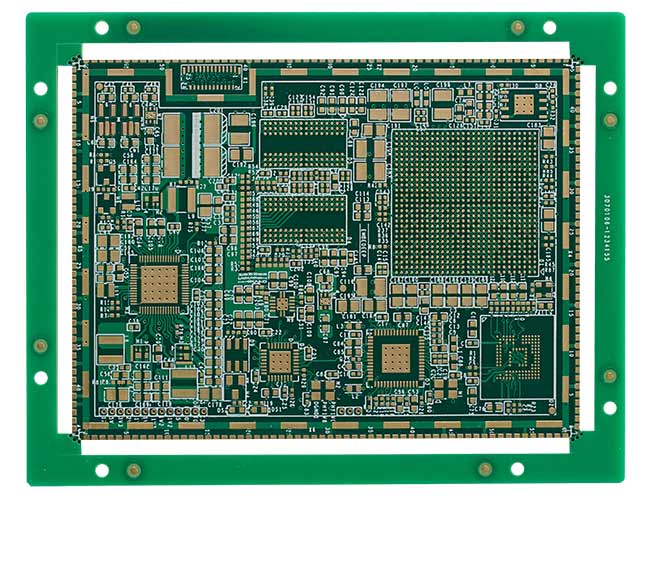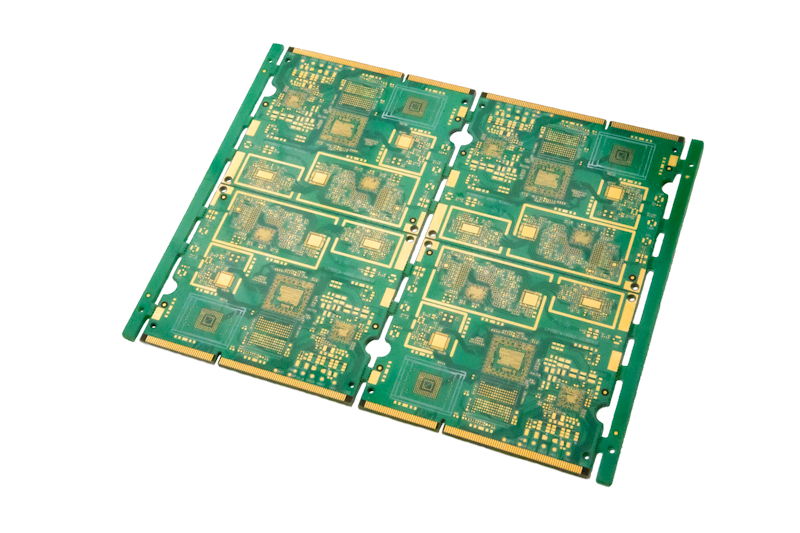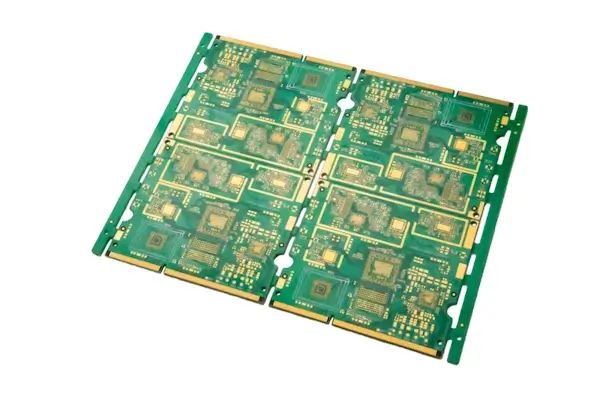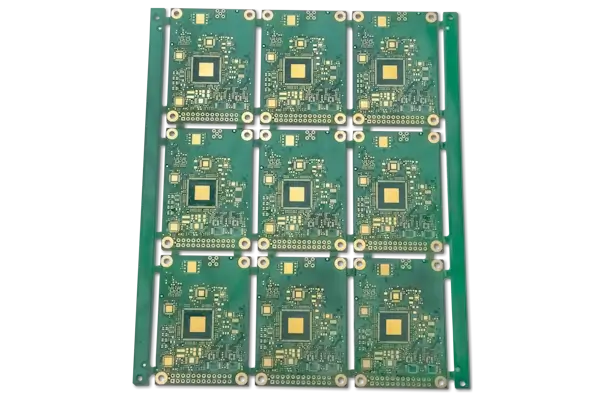What are High-TG Printed Circuit Boards?
High-TG or high glass transition temperature PCBs are printed circuit boards that utilize specialized substrate materials designed to withstand elevated operating temperatures. For this reason, High-TG PCBs are often referred to as high-temperature PCBs or temperature-resistant PCBs.
NextPCB offers a variety of premium, industry certified High-TG PCB material options for a multitude of industries and applications, ensuring performance, durability and reliability in the most demanding environments.
What is the Glass Transition Temperature?
Tg stands for Glass Transition temperature, which is the temperature at which the substrate begins to soften and deform, compromising it’s mechanical and electrical properties. When the material is exposed to temperatures above it’s TG rating for extended periods of time, the board is likely to bend and warp, or even delaminate.
What is the TG value?
FR-4 epoxy laminates are typically given a TG rating or value, for example TG130, where the number is the glass transition temperature in degrees Celsius. Typical TG values include TG130, TG150, TG170 all the way up to TG250 and above. Certain industries and PCB designs require higher TG values to ensure thermal stability in harsh environments and operating conditions. The typical TG value for prototypes and consumer electronics is TG130, and for other industries, please refer to the table below.
| Application |
TG Value (°C) |
TG Type |
Materials |
| Consumer Electronics |
130-150 |
Low TG/Mid TG |
Standard FR4 |
| Automotive, Industrial, High power LEDs, high-density designs |
170-180 |
High-TG |
Enhanced FR4 |
| Aerospace, military, high-power electronics |
180-220 |
High-Temperature |
Polyimide-based |
| High-Frequency, RF circuits, IC substrates, flex circuits |
220-250 |
High-Temperature |
PTFE (Teflon), Ceramic |
| 5G/mmWave, RF/microwave, Space electronics |
>280 |
High-Temperature |
Rogers laminates |
It is important to note that the glass transition temperature is not the absolute thermal limit to which a PCB board can be exposed to. Typical soldering temperatures can easily reach several hundreds of degrees and even low-temperature solders have a melting point of around 140°C. Standard FR4 materials can be exposed to high temperatures for short periods of time without significant long-term impact.
For long-term reliability, the TG value should always exceed the device’s maximum operating temperature. For instance, if a PCB's maximum operating temperature is 150°C, the substrate should have a Tg of 170°C or higher to prevent thermal degradation over time. As a good rule of thumb, the TG rating of the substrate should be 20-25°C higher than the maximum operating temperature.
When to choose High-TG or High Temperature PCB substrate materials
High-TG substrate materials are chemically enhanced or engineered with specialized formulations to increase their glass transition temperature (Tg), improving their ability to withstand elevated temperatures. However, TG value is just one factor when selecting substrate materials for high-temperature or thermally resistant PCBs. Other properties include:
- Low Z-axis CTE (minimizing expansion under heat to prevent warping and delamination)
- High decomposition temperature (Td) (ensuring structural integrity at extreme temperatures)
- Tg ratings significantly higher than standard high-Tg laminates (>200°C)
These properties allow thermal stability for prolonged high-temperature operation, such as in aerospace, automotive, or power electronics applications.
High-TG and High Temperature PCB Manufacture by NextPCB
NextPCB's standard quickturn and advanced PCB manufacturing services provide a wide range of PCB substrates to choose from. For the Standard PCB service, NextPCB offers KB and Shengyi low (TG130), mid (TG150) and high (TG170) TG laminates suitable for prototyping, semi-complex PCBs and consumer electronics. For PCBs with higher layer counts and HDI PCBs, we recommend choosing laminates with higher TG ratings.
We also stock various laminates from internationally recognized suppliers, including Shengyi, TUC, ITEQ, Ventec, Arlon which are available via our Advanced PCB service. For PTFE laminates and ultra-high temperature requirements, please see our High Frequency PCBs and Ceramic PCBs.
High-TG PCB Materials available at NextPCB
| Material Code |
Brand |
Type |
DK |
DF |
Tg/℃ |
Halogen-free |
Other |
Data Sheet |
| S1000-2 |
Shengyi |
High TG |
4.6 |
0.018 |
180 |
Yes |
Lead-free Process |
S1000-2.pdf |
| TU-768 |
TUC |
High TG |
4.4 |
0.019 |
180 |
Yes |
Lead-free Process |
TU768.pdf |
| IT-180A |
ITEQ |
High TG |
4.4 |
0.015 |
175 |
Yes |
Lead-free Process |
IT180A.pdf |
High-temperature PCB Materials available at NextPCB
| Material Code |
Brand |
Type |
DK |
DF |
Tg/℃ |
Halogen-free |
Other |
Data Sheet |
| VT-901 |
Ventec |
Polyimide |
4.05 |
0.012 |
250 |
Yes |
Lead-free Process |
VT901.pdf |
| 85N |
Arlon |
Polyimide |
4 |
0.01 |
250 |
No |
Lead-free Process |
85N.pdf |
NextPCB can also support other types and laminate models, just enter the model number on the order form or contact us for details.
NextPCB PCB Showcase
Kingbrother (KB) High-TG PCB
Custom PCB for consumer electronics made with high-TG KB TG170 laminates
Specifications
| TG Rating |
TG170 |
| Laminate Manufacturer |
Kingbrother (KB) |
| Substrate Type |
FR4 |
| Layer Count |
8-layer HDI I |
| Board Thickness |
1.0mm |
| Dimensions |
140 x 140mm |
| Surface Finish |
ENIG + Gold Fingers |
| Solder Mask Color |
Green |
Shengyi High-TG PCB
Custom PCB for automotive electronics made with high-TG Shengyi TG170 laminates
Specifications
| TG Rating |
TG170 |
| Laminate Manufacturer |
Shengyi (SY) |
| Substrate Type |
FR4 |
| Layer Count |
12-layer HDI II |
| Board Thickness |
2.5mm |
| Dimensions |
50 x 36mm |
| Surface Finish |
ENIG |
| Solder Mask Color |
Green |
12 Layer High-TG PCB
Custom PCB for automotive electronics made with high-TG Shengyi TG170 laminates
Specifications
| TG Rating |
TG170 |
| Laminate Manufacturer |
Shengyi (SY) |
| Substrate Type |
FR4 |
| Layer Count |
12-layer HDI II |
| Board Thickness |
2.5mm |
| Dimensions |
50 x 36mm |
| Surface Finish |
ENIG + Gold Fingers |
| Solder Mask Color |
Green |
Get a Quote
Entrust your mission-critical products to NextPCB's safe hands. With over 15 years of experience delivering exceptional PCBs for the most demanding applications, NextPCB ensures reliability, precision, and high-performance circuit boards from prototype to deployment.
 PCB Assembly
PCB Assembly
 Layer Buildup
Layer Buildup
 Online Tools
Online Tools
 PCB Design-Aid & Layout
PCB Design-Aid & Layout
 Mechanics
Mechanics
 SMD-Stencils
SMD-Stencils
 Quality
Quality
 Drills & Throughplating
Drills & Throughplating
 Factory & Certificate
Factory & Certificate
 PCB Assembly Factory Show
Certificate
PCB Assembly Factory Show
Certificate











